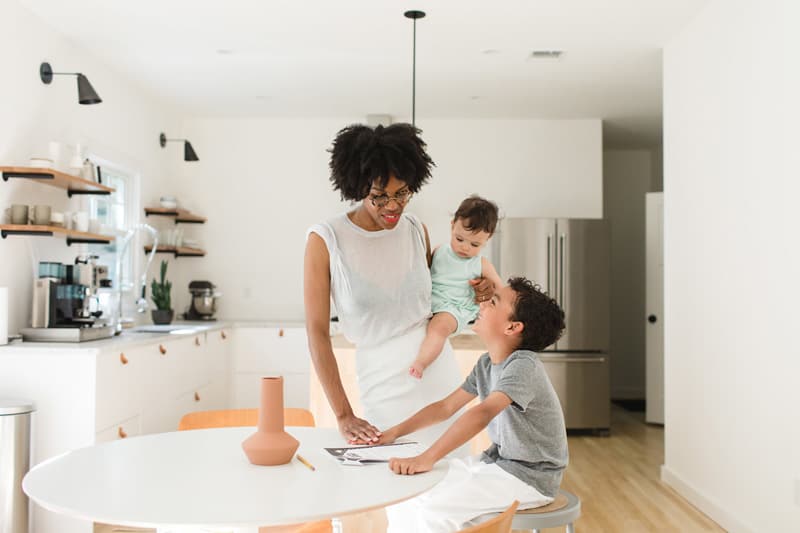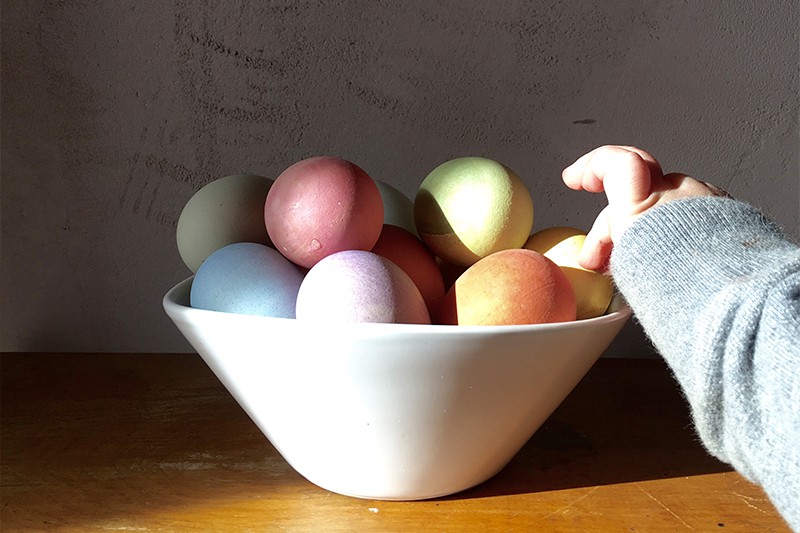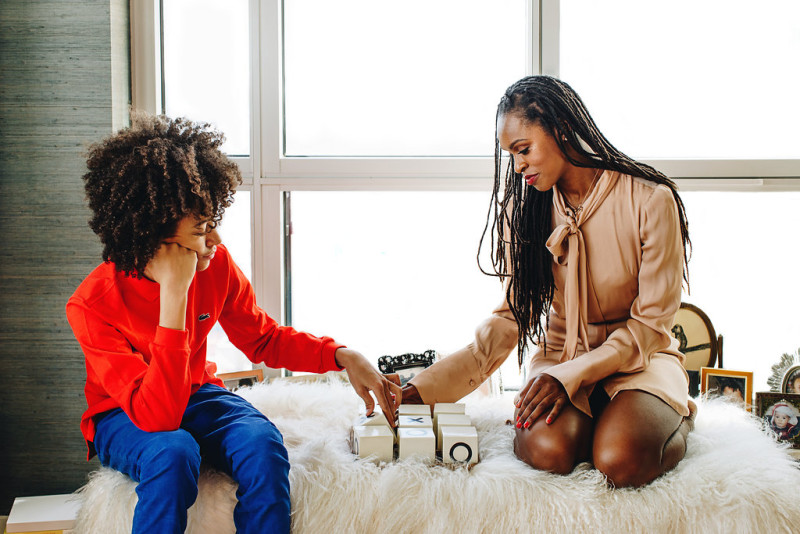
The Benefits Of Creating A Routine With Children
Written by Sara Langer
Photography by Lindsey Caldwell and Family, Photographed by Julia Hirsch
Life as a parent with a baby or young child can be unpredictable. Just as you think you’ve figured something out, it changes and you’re back at square one, learning all over again. But even in the early days of parenting, implementing some sort of daily rhythm or routine is going to have great benefits for you and your child as they continue to grow. Not only do routines help adults be more productive and have better sleep, they create a less stressful and anxious environment for the whole family. Many of the well respected educational methods, such as Montessori and Waldorf, stress the importance of creating a rhythm for your children in the early years. The leaders of these philosophies agree that a routine helps young people become more secure and independent. According to a recent CNN article, studies show that maintaining a daily routine is important for our mental health. But, if the idea of “routine” sounds like monotony with little room for spontaneous adventures, think again. Having a routine actually allows you to be more intentional and efficient with your time, creating more moments for you to be present with your children, where creativity and adventure can occur organically. Here we share some of the major benefits of creating a routine with children and simple ways to build rhythm as a family.
Create Simple Daily Rituals
Your child’s daily rhythm shouldn’t include a detailed schedule with ten things that need to be accomplished before 9am with no room for flexibility and changes. Rhythm and routine can be created from small daily rituals or habits. Whether it’s singing the same song right before bedtime or always waking up with a cup of warm milk, start small. You can build onto your routine as your rituals become habits. Provide a few consistent and predictable moments throughout the day for your little ones that are so simple you can do them anywhere. This way if your family has a schedule that is always changing or maybe you travel a lot, you can still fit these rituals in.
Break Up The Day Into Segments To Build Upon
Look at a typical day in your child’s life and create segments. It could be “Morning, Afternoon, Evening” or “Before School, After School, Evening” or “wake, nap, wake, nap, wake, nap” in the early baby days. Try and find where you have the most consistency, even if your schedule changes frequently, and start to create some consistent routines from there. Once you create a few consistent routines in place they will become habits that happen naturally. From there you can add more structure.
Reduce Stress and Anxiety, Foster Independence
By creating consistent, predictable anchors to your day, you will help lessen stress and anxiety for the whole family. When a child has an idea of what to expect or what is coming they are often calmer and more secure during transitions. It is comforting for both children and adults to have an idea of what is to come and it may also help eliminate power struggles. If your child knows that after they brush their teeth at night they get to pick out a book, they may be more inclined to go along with teeth brushing (even though they don’t love it) because they know that something enjoyable will happen after. As children get older they are able to follow routines more independently, because they know what to expect.
Create Routines for Sleep and Time for Rest
For parents of young children or babies who struggle with sleep, implementing a consistent nighttime routine is a common suggestion from many experts. While creating a night time routine may not improve sleep instantly, over time, a consistent schedule can help stabilize a person’s circadian rhythm, which leads to better, more sound sleep. Try and make bedtime and wake up time the same every day. For babies and younger children, naps will certainly be a part of their daily rhythm but don’t discount the importance of rest and quiet time, even when children have outgrown naps. Having time to rest, be quiet and still, will help to both calm the body and mind and re-energize children for the rest of the day.
Allow Time for Open-Ended Play and Avoid Overscheduling
There has been a great deal of research and literature on the importance and power of open-ended play. And there should be plenty of time for unstructured, self-guided play in a child’s daily routine. Creating a rhythm and a schedule does not mean you need to fill every waking hour of your child’s day with structured activities. The daily rhythm can be seen as an outline, providing a path with opportunities to play and be free, but not necessarily specific activities that have been decided in advance. Even if you’re kids are in school or with a childcare provider all day, try and build in unstructured play time around that schedule.
Build in Routines and Time for Yourself
One of the great things about creating a daily routine is that you can manage your time more efficiently. For example, if you know that every night you are going to give your children a bath, make that your time to always drink a cup of tea (or wine) while sitting with them, or take time to do some pampering of your own while you’re in the bathroom.
There Will Be Times When the Rhythm is Off
Schedules are dynamic and sometimes the rhythm is going to be off, but that is ok. One of the great things about rhythm, ritual, and routine, is the solid foundation of security it can create for a young person. While some days may be complete chaos and there is no such thing as a schedule, there will be a sense of relief and comfort when you are able to implement the familiar again.
Share this story




